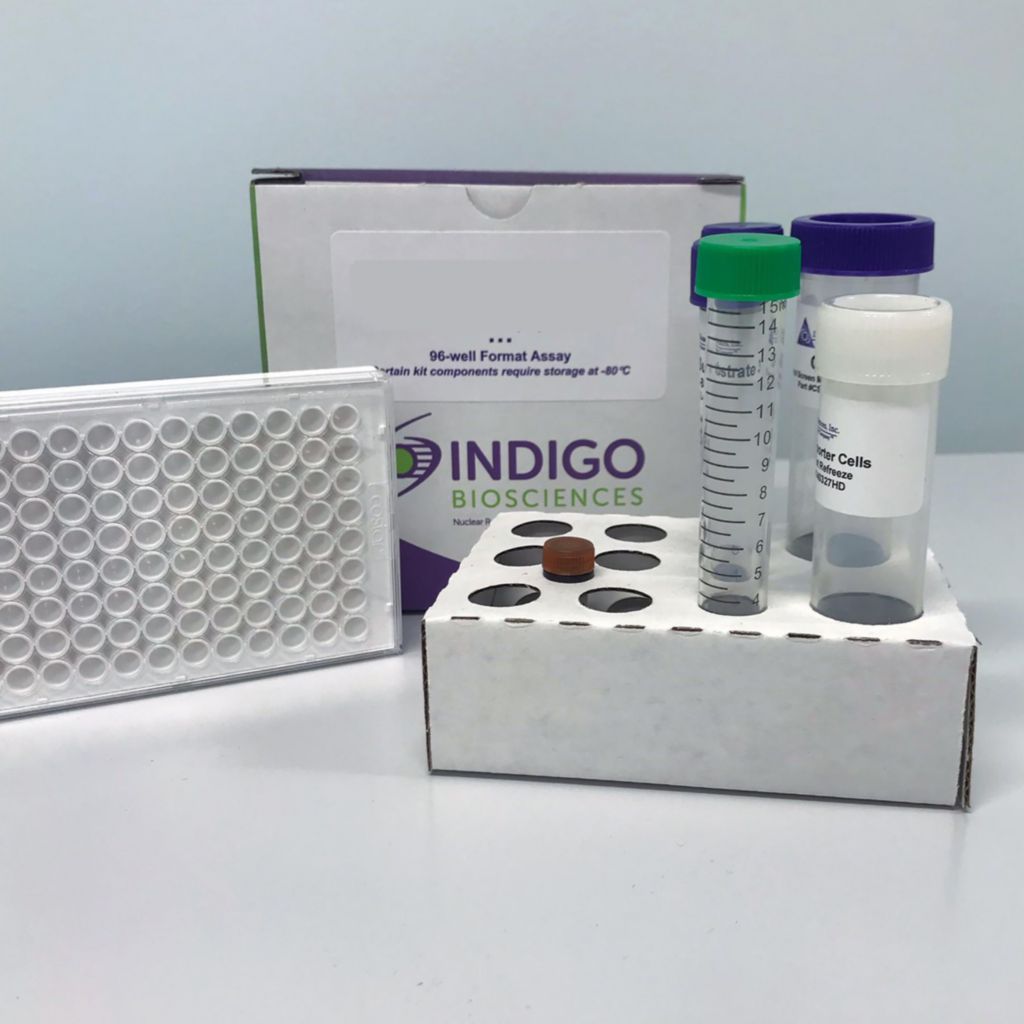Product Description and Product Data
This is an all-inclusive cell-based luciferase reporter assay kit targeting the Human Tumor Protein p53 (p53). INDIGO’s p53 reporter assay utilizes proprietary mammalian cells that have been engineered to provide constitutive expression of the Human Tumor Protein p53. In addition to p53 Reporter Cells, this kit provides two optimized media for use during cell culture and in diluting the user’s test samples, a reference activator, Luciferase Detection Reagent, and two cell culture-ready assay plates. The principal application of this reporter assay is in the screening of test compounds to quantify any functional activity that they may exert against p53. This kit provides researchers with clear, reproducible results, exceptional cell viability post-thaw, and consistent results lot to lot. Kits must be stored at -80C. Do not store in liquid nitrogen. Note: reporter cells cannot be refrozen or maintained in extended culture.
Features
Clear, Reproducible Results
- All-Inclusive Assay Systems
- Exceptional Cell Viability Post-Thaw
- Consistent Results Lot to Lot
Product Specifications
| Target Type | Transcription Factor | ||
| Species | Human | ||
| Receptor Form | Native | ||
| Assay Mode | Agonist | ||
| Kit Components |
| ||
| Shelf Life | 6 months | ||
| Orthologs Available | No | ||
| Shipping Requirements | Dry Ice | ||
| Storage temperature | -80C |
Data
Target Background
Tumor protein P53, also known as p53, acquired its reputation as “guardian of the genome” through its ability to sense and respond to cellular stress, preventing accumulation of DNA damage and subsequent formation of malignancies. p53 is a transcription factor and tumor suppressor that responds to cellular stress by regulating genes involved in a diverse array of cellular responses, including but not limited to, cell cycle arrest, DNA repair, apoptosis, senescence, and autophagy, thus minimizing the negative consequences of genetic mutation. p53 is expressed at low levels in cells in the absence of stress, regulated by various factors including MDM2 (also known as HDM2), which acts as a negative regulator through its E3 ubiquitin ligase activity, and WIP1/PPM1D, which also acts as a negative regulator of p53 through its ability to dephosphorylate specific residues on both p53 and MDM2, leading to the destabilization of p53 and the stabilization of HDM2, respectively. p53 in turn directly influences the expression of these two negative regulators, as both MDM2 and WIP1/PPM1D are target genes of p53.
p53 is the most commonly mutated gene in human cancer formation, and is therefore of interest in cancer research and therapeutic development. Potential therapeutics may target the p53 pathway in several ways. These include restoration of mutated p53 to its wild-type conformation and targeting regulators of p53 activity, for example, by inhibiting MDM2. The small molecule PRIMA-1, as well as derivates of the thiosemicarbazone family, have been shown to restore wild-type p53 activity, and several classes of MDM2 inhibitors, including nutlins, have been developed and studied. Since the causes, results, and regulation of p53 activation are diverse and context-dependent, therapeutics targeting the p53 pathway are necessarily diverse as well.
INDIGO’s p53 Reporter Cells include the luciferase reporter gene functionally linked to a p53-responsive promoter. Thus, quantifying changes in luciferase expression in the treated reporter cells provides a sensitive surrogate measure of the changes in human p53 activity.
Therefore, the principal application of this reporter assay is in the screening of test compounds to quantify any functional activity that they may exert against human p53.
Product Documentation
Also available as a service

